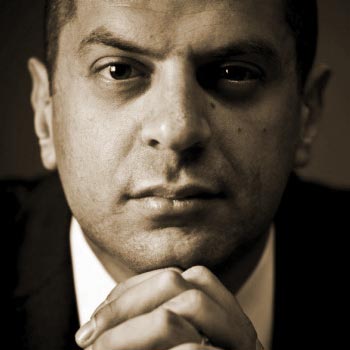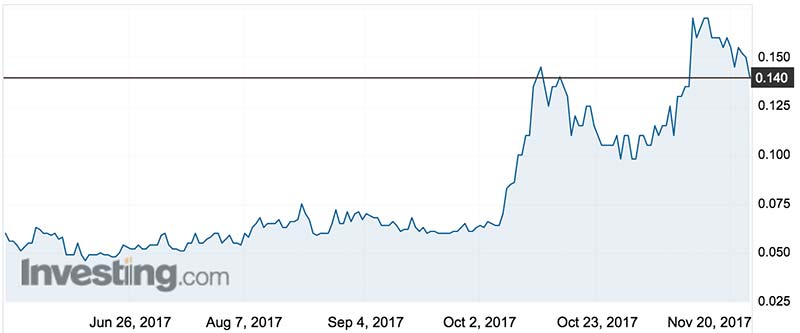Investors have yet to price in Hill End Gold’s High Purity Alumina push

Pic: Bloomberg Creative / Bloomberg Creative Photos via Getty Images
The upside of Hill End Gold’s High Purity Alumina push has yet to be priced in to the stock, writes Barry FitzGerald in his weekly Garimpeiro column.
Hill End Gold’s name has become something of a misnomer given the company’s switch in focus from gold in historic settings in NSW to one of the new buzz materials – high purity alumina (HPA).
The kaolin deposits (aluminous clay) which underpin the HPA push are near Ballarat in Victoria, another historic gold mining centre.
HPA is currently a small global market of about 25,000 tonnes annually.
But the high-value material ($US25-$US40 per kg depending on particular markets and quality) is enjoying super-charged growth thanks to demand from a number of boom industries — lithium-ion batteries, LED lighting and scratch-resistant clear synthetic sapphire glass (smartphone screens and lenses).
Given there is a battery application for HPA as a separator between anodes and cathodes to prevent fire, there should be no surprise that Melbourne’s battery materials fan Tolga Kumova of Syrah graphite fame (pictured below) is on Hill End’s register.

Kumova and another former Syrah operative, Tom Eadie, struck a staged shares and cash deal with Hill End (ASX:HEG) earlier this year for the sale of their privately-owned company which owned the kaolin deposits near Ballarat which now underpin Hill End’s HPA push.
The Ferrari-driving Kumova, and soon-to-be proud owner of the latest (battery-powered) top-of-the-range Tesla, won’t have far to go to check on progress of the HPA project.
Ballarat is a 90-minute drive from Melbourne on the Western Highway. If he is ever tempted to go full throttle in the Ferrari, or the Tesla in its Ludicrous mode, the drive time would be something substantially less.
The region around Ballarat has long been known for its production of high-quality kaolin for the paper filler and ceramics markets.
Hill End’s acquisition from Kumova and Eadie delivered a big kaolin footprint, with the initial focus being the Yendon deposit near Lal Lal, about 25km south-east of Ballarat.
A resource estimate is possible before the end of the year. But Hill End’s HPA ambitions are not resource-constrained.
To become a significant HPA producer, Hill End would probably need to mine no more than 100,000 tonnes of material annually to produce 40,000 tonnes of kaolin.
The kaolin would then go in to a calcining and acid-heavy chemical process to yield 10,000 tonnes of HPA (99.99 per cent purity) — enough to account for 40 per cent of current global consumption.
But given general agreement among HPA experts that demand is set to grow at an annual compound rate of 15-20 per cent, Hill End’s project and others will be needed over time to sate demand.

All those figures are indicative only as Hill End has much work to do before it becomes a HPA producer.
It is moving at a cracking pace, funded in part by a recent capital raising.
In an update to the market this week, Hill End reported that tests in a Perth laboratory on a sample from Yendon confirmed that production of a 99.99 per cent or better HPA product was possible using conventional purification processes.
Meanwhile, assaying of drill core from Yendon has been completed. It delivered “excellent’’ high-grade and low containment levels, as well as high yields of the preferred sizing of the mineralisation.
Metallurgical test work is expected to be completed in the first quarter of next year and will be included in a following preliminary feasibility study in to a development.
A site for the processing of the kaolin in to HPA is not yet decided. But Victoria’s high energy costs make it unlikely the State will host the plant.
Options for the future of Hill End’s gold projects (570,000 oz at the Hargraves and Hill End projects in central NSW) are being reviewed in light of the HPA push. Their sale is a possibility.
Hill End last traded at 14c for a market cap of $16m.
The gold assets pretty much justify that sort of market value, meaning the upside of the HPA push has yet to be priced in to the stock.
The resource update, and the PFS to follow, will go a long way to rectifying that situation.
UNLOCK INSIGHTS
Discover the untold stories of emerging ASX stocks.
Daily news and expert analysis, it's free to subscribe.
By proceeding, you confirm you understand that we handle personal information in accordance with our Privacy Policy.







